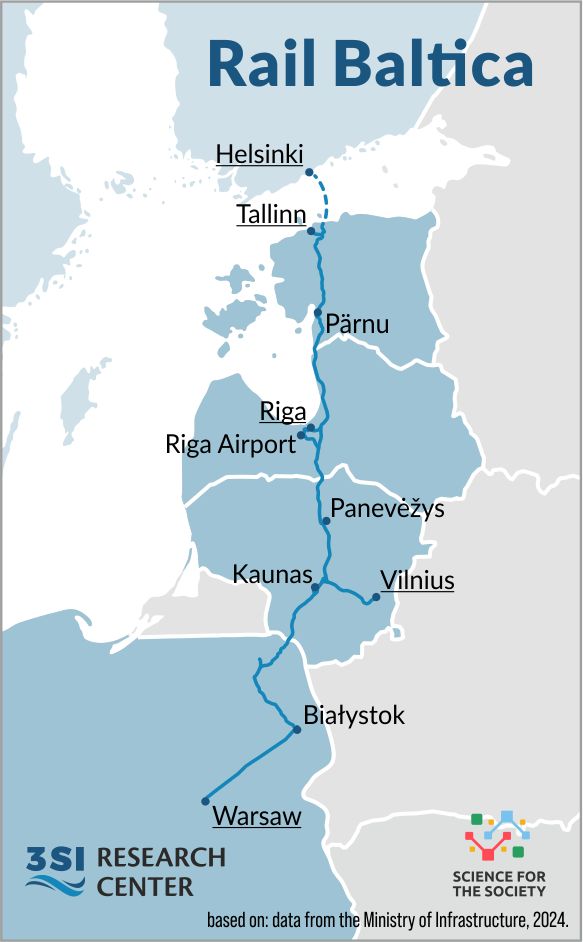Rail Baltica Project Overview
The following information was compiled exclusively based on information regarding Rail Baltica available on the official website of the Three Seas Initiative
Rail Baltica is a transformative greenfield rail transport infrastructure project aimed at integrating the Baltic States into the European rail network, encompassing Estonia, Latvia, Lithuania, Poland, and indirectly Finland. This project is part of the Trans-European Transport Network (TEN-T) and is financed under the Connecting Europe Facility (CEF).
Project Details:
- Funding: National states, EU co-funding up to 85% via CEF, Recovery and Resilience Facility (RRF), and Structural Funds.
- Grants: Seven CEF grants totaling €2.25 billion; two more grants under evaluation for €2.23 billion.
- Legislation: Complies with TEN-T Regulation 1315/2013 and CEF Regulation 1316/2013.
Infrastructure and Benefits:
- Route: Continuous rail link from Tallinn (Estonia) to Warsaw (Poland) via Riga (Latvia) and Kaunas (Lithuania), with a connection to Vilnius (Lithuania).
- Impact: Rail Baltica will transform travel times, improve economic competitiveness, enhance traffic safety, and provide a sustainable alternative for cargo carriers. It will significantly reduce the environmental footprint and serve as a catalyst for sustainable economic growth in the region.
- Regional Integration: The project will complete the integration of the Baltic States into the EU rail transport system, improving the North Sea-Baltic corridor. It connects with other major TEN-T corridors like the Baltic-Adriatic, enhancing the core transport network for Three Seas Initiative member states.
Key Entities:
- Beneficiaries: Ministries of Estonia, Latvia, and Lithuania.
- Coordinator: RB Rail AS (a joint venture established in 2014 to coordinate cross-border activities).
- Implementing Bodies: Rail Baltic Estonia OÜ, Estonian Technical Regulatory Authority, Eiropas Dzelzceļa līnijas SIA, and Lietuvos geležinkeliai JSC.
Significance: Rail Baltica is poised to revolutionize logistics in the eastern Baltic Sea region. The new EU-gauge rail connection will not only enhance local mobility but also contribute to the development of the entire North Sea-Baltic Corridor, linking it with key European economic hubs such as the Netherlands, Belgium, Germany, and Finland.
Map project: Jędrzej Błaszczak
Graphics: Marcin Wereszczyński
